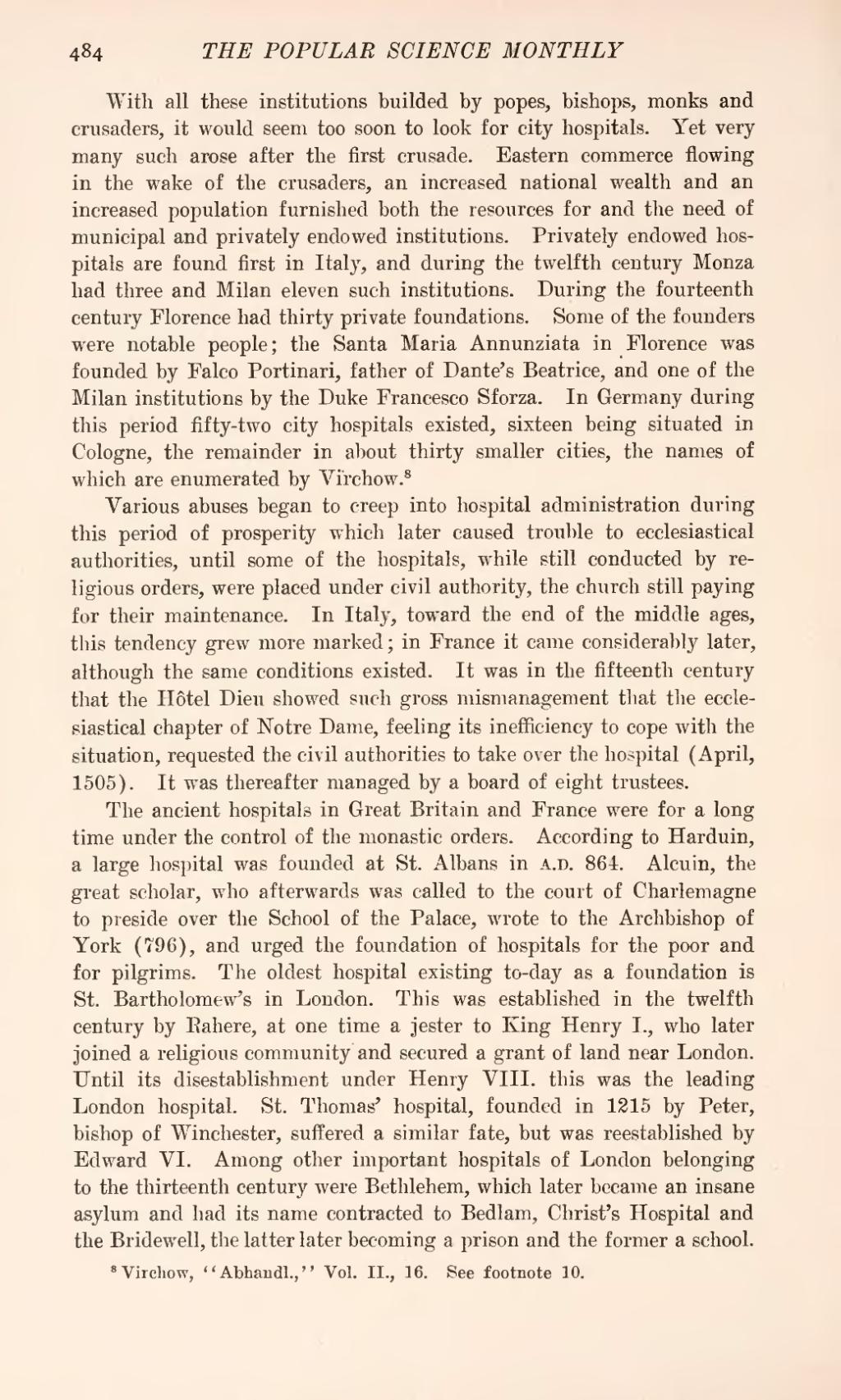With all these institutions builded by popes, bishops, monks and crusaders, it would seem too soon to look for city hospitals. Yet very many such arose after the first crusade. Eastern commerce flowing in the wake of the crusaders, an increased national wealth and an increased population furnished both the resources for and the need of municipal and privately endowed institutions. Privately endowed hospitals are found first in Italy, and during the twelfth century Monza had three and Milan eleven such institutions. During the fourteenth century Florence had thirty private foundations. Some of the founders were notable people; the Santa Maria Annunziata in Florence was founded by Falco Portinari, father of Dante's Beatrice, and one of the Milan institutions by the Duke Francesco Sforza. In Germany during this period fifty-two city hospitals existed, sixteen being situated in Cologne, the remainder in about thirty smaller cities, the names of which are enumerated by Virchow.[1]
Various abuses began to creep into hospital administration during this period of prosperity which later caused trouble to ecclesiastical authorities, until some of the hospitals, while still conducted by religions orders, were placed under civil authority, the church still paying for their maintenance. In Italy, toward the end of the middle ages, this tendency grew more marked; in France it came considerably later, although the same conditions existed. It was in the fifteenth century that the Hôtel Dieu showed such gross mismanagement that the ecclesiastical chapter of Notre Dame, feeling its inefficiency to cope with the situation, requested the civil authorities to take over the hospital (April, 1505). It was thereafter managed by a board of eight trustees.
The ancient hospitals in Great Britain and France were for a long time under the control of the monastic orders. According to Harduin, a large hospital was founded at St. Albans in A.D. 861. Alcuin, the great scholar, who afterwards was called to the court of Charlemagne to preside over the School of the Palace, wrote to the Archbishop of York (796), and urged the foundation of hospitals for the poor and for pilgrims. The oldest hospital existing to-day as a foundation is St. Bartholomew's in London. This was established in the twelfth century by Rahere, at one time a jester to King Henry I., who later joined a religious community and secured a grant of land near London. Until its disestablishment under Henry VIII. this was the leading London hospital. St. Thomas' hospital, founded in 1215 by Peter, bishop of Winchester, suffered a similar fate, but was reestablished by Edward VI. Among other important hospitals of London belonging to the thirteenth century were Bethlehem, which later became an insane asylum and had its name contracted to Bedlam, Christ's Hospital and the Bridewell, the latter later becoming a prison and the former a school.
- ↑ Virchow, "Abhandl.," Vol. II., 16. See footnote 10.
